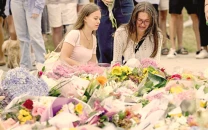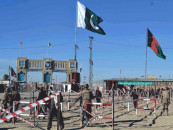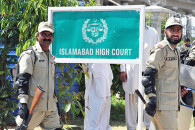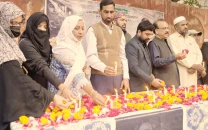Come rain, partition or encroachment: One of Pakistan’s oldest bazaars still thriving
350-year-old Bohar Bazaar is not just a trading hub but also a centre of politics

Come rain, partition or encroachment: One of Pakistan’s oldest bazaars still thriving
While the tree is not there anymore, having been chopped down painstakingly over a period of eight days by the city’s mayor Sheikh Ghulam Hussain in 1982 after being termed as ‘obstructive’, the 350-year-old bazaar continues to provide shade to all who come there and attracts people from all backgrounds in its narrow branch-like streets.
The market is said to have been created around 350 years ago and served as a trading hub for the city, a rile it continues to play to this day.
During the British rule, the area was called “Bohar Muhalla”. After partition and the creation of Pakistan, it began to be called Bohar Bazaar.
The area in and around the bazaar used to be dominated by the Hindu community. This can be seen by a large number of old buildings in the area which bear characteristics and features typical of Hindu households. A closer inspection of the weathered buildings tells a tale of the varying architecture over time, from elements and symbols from the late Mughal era to the more western construction of the colonial times.
One can also spot some modern buildings in the bazaar after some dilapidated old buildings were demolished to make way for the construction of commercials plazas.
Trading hub
Before the creation of Pakistan, the Bohar Bazaar extended from Urdu Bazaar Chowk to Naya Mohalla Chowk and was often referred to as the Kabaar Bazaar (junk market).
Despite being called ‘Kabaar’ it was a hub for people who wished to purchase used goods and accessories. Over time, though, the market reincarnated itself as a hub and a wholesale market.
Over two centuries old: Bhabra Bazaar buildings a relic of past
It now boasts goods such as medicines, jewellery, and even garments. It attracts customers from the entire Rawalpindi Division and adjoining areas such as Azad Jammu and Kashmir (AJK) and Khyber-Pakhtunkhwa (K-P).
It has also become a centre for large-scale grocery shopping with a variety of shops.
Sikh yatrees, who come to Pakistan to visit their sacred sites in Hassan Abdal, usually make it a point to stop in the market.
Culture hub
Apart from being a trading centre, the area has also produced some versatile artists.
One of them was Alauddin, a popular Pakistani film actor. He was born and raised in the Bohar Muhalla and worked his way into the film industry from here.
Others who made their way either on or behind a screen from the area was producer Riaz Ahmed and television artist Abid Majeed.
Political connection
After cutting down the massive banyan tree, the singular largest landmark in the market is the Lal Haveli, a large brick-red mansion that dominates Bohra Bazaar’s skyline.
The mansion belongs to Awami Muslim League (AML) chief and the incumbent Federal Railways Minister Sheikh Rasheed Ahmed. Having twice had stints in federal ministries and prominent political figure, he provides the main thrust of political activity in the area.
90 stalls gutted at Sunday bazaar
The infamous Kalashnikov case against Ahmed was also formed in Lal Haveli.
Owing to him, whether directly and indirectly, a host of other political leaders have also visited the area. These include deposed prime minister Nawaz Sharif, and the incumbent Leader of the Opposition in the National Assembly Shahbaz Sharif who has held rallies here.
Former Indian politician Lalu Prasad once visited the bazaar as well.
Prominent residents
Before partition, there used to be a Hindu mystic in the area called Murli who had formed a justice house called “Murli da Thara” where justice was served to the locals. After sunset, Murli would set up his court and locals, both Hindu and Muslims would come to him with their pleas hoping that Murli solves their issues justly. From 1930 to 1947, only four people owned a car of which one was a Hindu named Bandra, two were Sikhs called Mohan Singh and Sohan Singh and one was a Muslim named Chaudhry Maula Daad, the father of Justice Ali Nawaz Chauhan.
The Muslim family of Muhammad Ramzan had migrated to the bazaar around 300 years ago. Members of this family are said to still live in the area.
Issues
Despite the history of the area, it continues to face a host of issues.
Sunday bazaar visit: Town officials con newly elected mayor
The primary issue faced by residents, commuters, customers and shopkeepers is the terrible traffic. A logjam can be seen almost daily from 9am in the morning to 10pm in the evening.
The matter is made worse by the presence of encroachment which has swallowed footpaths whole and is now spilling on to the narrow roads. Even though the Rawalpindi authorities have launched an anti-encroachment drive across the city following directives from a bench of the Lahore High Court (LHC)-Rawalpindi registry, action against encroachment in the Bohar Bazaar is yet to commence.
Published in The Express Tribune, January 9th, 2019.



















COMMENTS
Comments are moderated and generally will be posted if they are on-topic and not abusive.
For more information, please see our Comments FAQ